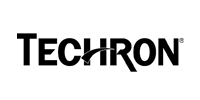Benefits of Using Havoline Automatic Transmission Fluids in Hot Weather


Have you ever stopped and thought about the immense amount of stress a cab in extreme hot weather? These taxies have to operate 24/7 in bumper-to-bumper traffic, and the average daily temperature exceeds a minimum of 40 degree Celsius. Severe weather and working environments take their toll on cars sporting automatic transmissions, which already run hot.
As they say, when the going gets tough, the tough get going. That's why many taxis in the UAE use Havoline® Full Synthetic Multi-Vehicle ATF and Havoline® Global Multi-Vehicle ATF products. Most of these cabs run up to 100,000 km with no drain intervals or top-ups–which is twice the recommended refill interval for cars operating in harsh conditions. Both the Full Synthetic Multi-Vehicle ATF and the Global Multi-Vehicle ATF performed better than factory brands in the grueling Dubai heat.
The Havoline Full Synthetic Multi-Vehicle ATF is a fully licensed GM DEXRON®-VI product. It is the perfect alternative for cars that require DEXRON-VI compatibility to be under warranty. The Havoline Global Multi-Vehicle ATF is suitable for post-warranty vehicles that may not require licensed products. It is also worth reminding cab owners that all Havoline products have Caltex's limited product warranty.




























